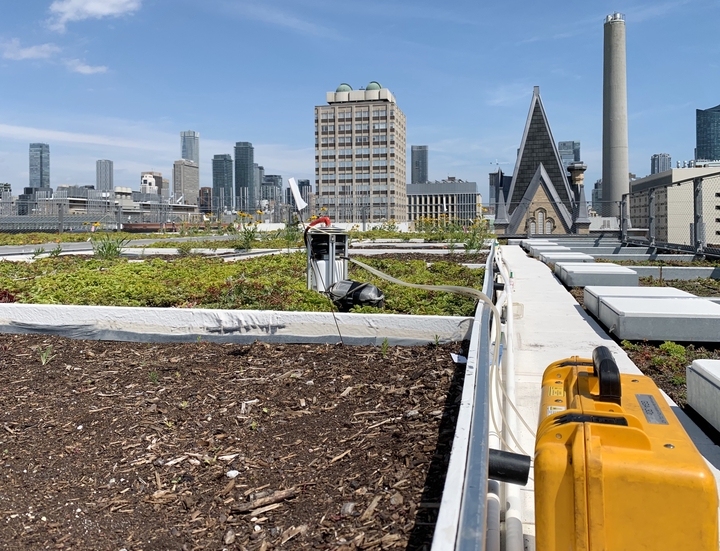Greenhouse gas fluxes from green roof substrates and biochar as a mitigation tool

Abstract
Green roofs are an emerging approach to enhance climate resilience of urban areas, including mitigation of stormwater discharge and urban heat island effects. There has also been recent interest in green roofs to enhance carbon sequestration, but direct measurements of greenhouse gas fluxes from established green roof systems are lacking. To better understand the relationships between green roof vegetation and substrate with greenhouse gas fluxes, we measured CO2 and CH4 fluxes, using a dynamic closed chamber technique, from substrates of experimental green roof units in Toronto in the early, mid, and late growing seasons of 2018. This measurements included extensive systems with mixes of Sedum species and intensive systems using a native meadow species mix, with both vegetation types implemented in a factorial design with substrate depth and type (high vs. low organic matter content) as factors. We hypothesized that CO2 fluxes would be higher in high organic matter substrates, and that systems with low vegetation cover and high organic matter would act as CH4 sources. Substrate CO2 efflux varied from 0.1–0.51 µmol.m-2.s-1, with pronounced differences in flux rates related to substrate type and depth (higher with increased substrate depth) but had little effect of vegetation type. Substrate CH4 fuxes included both net efflux and uptake (-0.1 to 0.14 nmol.m-2.s-1). Net uptake was found to be associated with high vegetation cover, particularly of native species. Results suggest that high organic matter in green roof substrates, while enhancing plant growth, can result in appreciable C losses, partly as CH4. Studies have explored various green roof substrates to enhance carbon sequestration of green roofs. Biochar, usually derived from pyrolyzed waste biomass, can be a potential amendment to green roof substrates to mitigate C loss. Recalcitrant biochars can increase soil water holding capacity and plant growth, and also known to suppress soil greenhouse gas fluxes in managed systems. However, the biochar effects on greenhouse fluxes of greenroof substrates have not previously been evaluated. In a similar experimental setup as above, we examined the effects of biochar addition (20 t/ha, sugar maple biochar) to a high organic matter green roof substrate in Sedum beds. Initial results indicate that biochar addition does not affect substrate CO2 effluxes, but can significantly reduce carbon loss from green roofs, mainly by suppressing (200%) CH4 effluuxes. Overall, our studies suggest that biochar can be a sustainable amendment to green roof substrates to mitigate C loss.